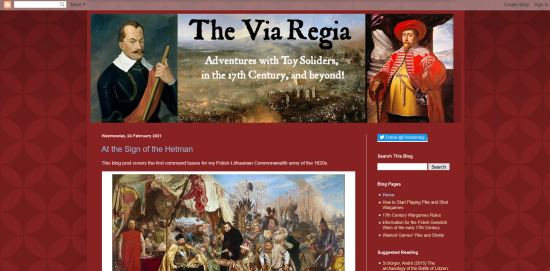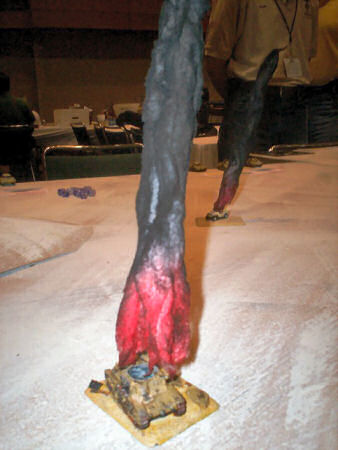
Infantry and artillery
48 pages. Many black-and-white pictures; eight color plates. Index.
TABLE OF CONTENTS
Introduction (1 page)
The Course of the War in Outline (7 pages)
Infantry (11 pages)
Tactics (3 pages)
Equipment (9 pages)
Artillery (3 pages)
Further Reading
Index (1 page)
My approach to this book is that, as a wargamer, I'm looking for some basic information about Imperial infantry and artillery in the Thirty Years' War. Organization and tactics would be interesting, but knowing how to identify and paint them is essential.
Introduction (p.3):
The Thirty Years' War and its consequences were the central facts of European history for half a century, and it was also the arena within which the science and practice of Western warfare developed.
The history section gets off to a bad start by immediately assuming that the reader knows about such things as the Uskok War, the Defenestration of Prague, and enough geography to know the difference between Bohemia and Bavaria (no maps are provided).
The author also seems a bit "old school" in referring to the Thirty Years' War as a religious war (many scholars point out that it was political at least as much as it was religious). The back cover text even refers to "Catholic commanders" - when in fact, both Catholic and Protestant officers served the Empire. Yet on the other hand, the author considers the troops of the Catholic League to not be Imperial at all.
Admitting that it would be difficult to write a brief summary of such a complex war, nevertheless my feeling is that this historical section is overstuffed with names, dates, and places, and fails to provide a useful summary of the war from an Imperial perspective.
Infantry (p.11):
The infantry made up the bulk of the force and, following the tradition of Emperor Maximilian's Landsknechts, it was mainly composed of two types: pikemen and musketeers. Firearms had developed significantly during the 16th and early 17th centuries, but the rate of fire was still not high enough to repulse cavalry charges, so the larger number were still pikemen. Their weapon was still considered to be 'the Queen of the battlefield', but during the Thirty Years' War the proportion of musketeers began to grow. At the beginning of the war the ratio was roughly even, shifting during the later part to 2:1 in favor of musketeers, and toward its end, in 1641, just one-fifth of the Imperial infantry was armed with pikes. These pikemen fought in deep ranks and were specialists in close combat; originally the musketeers were viewed as a support for the pikemen, but their roles would be reversed by the end of the Thirty Years' War.
While the author covers such topics as recruitment, training, and staff officers, there is relatively little information about infantry units themselves, and this is scattered in several places. Musketeers are said to include small contingents of calivermen (marksmen); pikemen also include small contingents of halberdiers and bucklers (heavy infantry) - then skip a page, and there's a reference to musketeers and pikemen being combined into companies and regiments - then skip a page, and suddenly calivermen are only used as skirmishers. In the Tactics section, we learn that infantry were organized into tercios, which were later replaced by "rolling line" tactics.
This section would have been much improved if the information had been better organized, so that you didn't have to hunt around to find the facts.
By contrast, the Equipment section is well presented and includes useful illustrations. (And the author finally explains what a 'caliver' is.) I was a bit surprised to find uniforms and flags included in this section, but glad to have the information.
The Artillery section is too brief to do the subject justice, and fails to explain why there were so many types of gun if they were "not very effective," immobile, and their "principal purpose" was to influence morale.
Color Plates:
Pikemen, 1618-40
Pikemen, 1640-48
Musketeers
Regimental Staff
Light Infantry
The High Command
Artillery
Military Music
The highlight of many Men-at-Arms books is the color plates, and this book is no exception. The topics selected for illustration give a good overview of the fighting men over the period of the war, and the detailed write-ups fill in details otherwise missed by the main text.
The bottom line is that although I was disappointed with many aspects of this volume, it does contain sufficient reference material for those seeking to paint up the core units of their Imperial armies. However, if you wanted to know how to organize those troops or employ those cannon, there is little useful information here. I would also have liked to see more information about how the Imperial army was different from other armies of this period.
Reviewed by unknown member.










